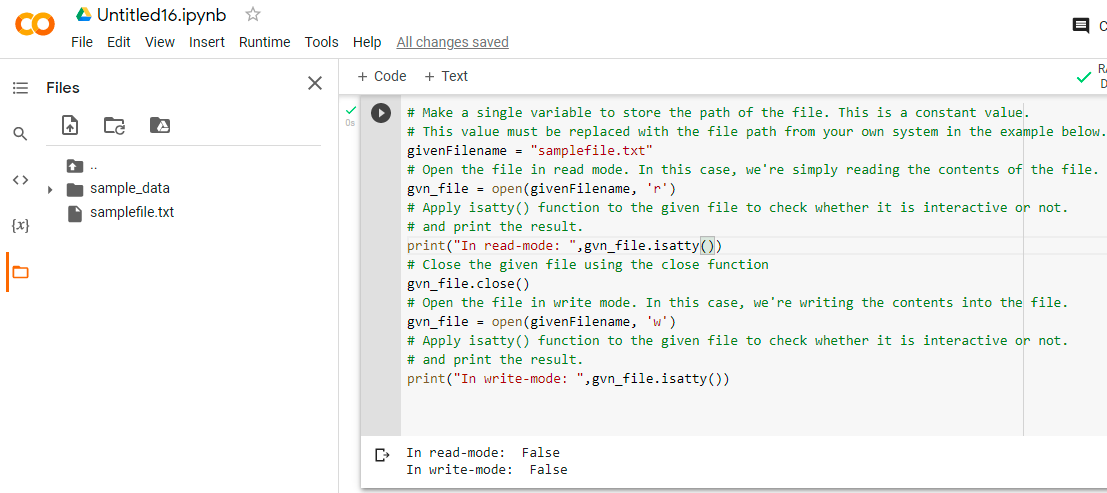Files in Python:
Isatty python: One of the most important subjects for programmers and automation testers is Python file handling (also known as File I/O). It is necessary to work with files in order to write to or read data from them.
Also, if you didn’t know, I/O operations are the most expensive processes where a programme can go wrong. As a result, you must use extreme caution while implementing file processing for reporting or any other reason. Optimizing a single file action can help in the creation of a high-performing application or a reliable automated software testing solution.
Consider the following scenario: you’re planning to construct a large Python project with a large number of workflows. Then it’s unavoidable that you don’t make a log file. You’ll also be handling the log file’s read and write activities. Debugging huge applications with log files is a terrific way to go. It’s usually better to consider a scalable design from the start, as you won’t be sorry later if you didn’t.
File isatty() Method in Python:
Python isatty: The isatty() method in Python is used to determine whether a file stream is interactive or not, i.e. whether a file stream is connected to a terminal device. When a file is connected to a terminal, it becomes interactive, and the method returns “True.”
Syntax:
file.isatty()
Parameters: This method doesn’t accept any parameters.
Return Value:
This method’s return type is <class ‘bool’>; it returns True if the file stream is interactive and False if the file stream is not interactive.
- Python Program to Count Number of Digits in a Text File
- How to run Python scripts
- Python Interview Questions on File Manipulation
File isatty() Method with Examples in Python
Example
Approach:
- Make a single variable to store the path of the file. This is a constant value. This value must be replaced with the file path from your own system in the example below.
- Open the file in read mode. In this case, we’re simply reading the contents of the file.
- Apply isatty() function to the given file to check whether it is interactive or not and print the result.
- Close the given file using the close function.
- Open the file in write mode. In this case, we’re writing the contents into the file.
- Apply isatty() function to the given file to check whether it is interactive or not and print the result.
- The Exit of Program.
Below is the implementation:
# Make a single variable to store the path of the file. This is a constant value.
# This value must be replaced with the file path from your own system in the example below.
givenFilename = "samplefile.txt"
# Open the file in read mode. In this case, we're simply reading the contents of the file.
gvn_file = open(givenFilename, 'r')
# Apply isatty() function to the given file to check whether it is interactive or not
# and print the result.
print("In read-mode: ",gvn_file.isatty())
# Close the given file using the close function
gvn_file.close()
# Open the file in write mode. In this case, we're writing the contents into the file.
gvn_file = open(givenFilename, 'w')
# Apply isatty() function to the given file to check whether it is interactive or not
# and print the result.
print("In write-mode: ",gvn_file.isatty())
Output:
In read-mode: False In write-mode: False
File Content:
Hello this is btechgeeks Good morning btechgeeks welcome to python-coding platform
Google Colab Images:
Files and Code:


